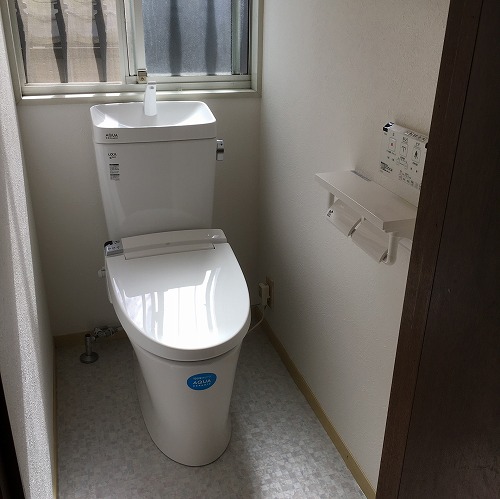Mastering Bathroom Space Limitations in Bathroom Layout
페이지 정보

본문
Opening the door to a confined bathroom reveals the first issue: a lack of breathing room. Yet a poorly sized bathroom can feel like a maze of tile, plumbing, and clutter. Good news: space constraints aren't the end of design. A little planning and creativity can turn a small bathroom into a functional, stylish oasis.
Reasons a Bathroom Feels Small?
Limited Square Footage – A 5 × 8‑foot bathroom is typical in older houses, especially in urban areas that value space.
Fixed Layout – The arrangement of plumbing, windows, and doors usually determines fixture placement, offering little leeway.
Poor Storage – When everything has to live on the floor or in a corner, the room looks cluttered and overwhelming.
Lighting Issues – A small bathroom may feel dim because of scarce window space or older lighting fixtures.
Color 名古屋市東区 トイレリフォーム 格安 and Texture – Deep colors or heavy textures can make the bathroom feel tighter.
By confronting each challenge head‑on, you can make a bathroom feel open, bright, and orderly.
Rethink the Layout
Floating Vanities – A wall‑mounted vanity frees up floor space and gives the illusion of a larger area. Keep the base empty or use a shallow drawer to maintain a sleek look.
Walk‑In Shower – Substitute a bulky tub with a glass‑enclosed walk‑in shower. The clear glass keeps visual focus forward, avoiding a boxed feel.
Compact Fixtures – Find "compact" or "trim‑down" toilets and faucets. Many makers provide space‑saving options that still perform the same.
Amplify Storage Without Adding Bulk
Vertical Shelving – Put open shelves from floor to ceiling. Put towels, toiletries, and décor up high, out of sight.
Over‑Cabinet Hooks – Place hooks above the sink or shower to keep towels and robes off the floor. A well‑placed hook rack can hold several items while using minimal space.
Niche Shelving – In a recessed corner, add a shallow niche for a medicine cabinet or a small shelf of daily essentials.
Under‑Sink Drawers – Swap a tall cabinet for a short drawer unit. It’s more accessible and doesn’t dominate the wall.
Brighten It Up
Layered Lighting – Combine a bright overhead light with softer task lighting around the vanity. A mirror with built‑in LED strips can provide even, flattering illumination.
Mirrors with Light – A large mirror reflects light and expands the feeling of space. Position it opposite a window or light source for maximum gain.
Natural Light – With a window, keep the frame simple and eliminate heavy drapes. Sheer curtains or simple blinds preserve privacy while light filters through.
Select Colors Wisely
Light Palette – Whites, creams, pale grays, and cool blues create a sense of airiness. Avoid heavy, dark colors that can make the room feel cramped.
Consistent Tones – Keep the color palette consistent across tiles, fixtures, and accessories. A cohesive look reduces visual clutter.
Accent Walls – To add color, pick one accent wall or a bold tile pattern in a small corner—avoid covering the whole room.
Leverage Multi‑Functionality
Two‑in‑One Fixtures – A combined toilet and bidet or a shower‑tub combo reduces the fixture count.
Fold‑Down Furniture – A fold‑away vanity or a pull‑out medicine cabinet can be tucked away when not needed.
Dual‑Purpose Accessories – A towel rail that also serves as a storage shelf, or a shower caddy with built‑in hooks, saves space.
Keep It Minimal
Declutter Regularly – Store unused items out of sight. A small cabinet or a shelf behind the door can conceal seasonal toiletries.
Simplify Accessories – Use one soap dispenser, one toothbrush holder, and one decorative item. Over‑decorating can overwhelm a small space.
Smart Organization – Place organizers under the sink or on the cabinet door. A lazy‑suspenser or a magnetic strip for razors keeps items tidy and accessible.
Add a Touch of Opulence
Shower Curtain vs. Glass – A clear glass door uses less space than a heavy curtain. If privacy is a concern, opt for frosted or textured glass.
Textured Tiling – A subtle pattern in the shower or a small tile border adds visual interest without crowding the room.
Soft Fabrics – Lightly colored towels and a fluffy bath mat give texture and warmth without bulk.
Combining All Elements
Begin by drawing the space on graph paper or using an online room planner.
Note the fixed elements—walls, doors, windows, plumbing—and then experiment with different fixture placements.
Keep a list of potential storage solutions and test how they affect the flow of the room.
Keep in mind that a small bathroom can feel grand when the design emphasizes openness, light, and simplicity.
Final Words
Dealing with space constraints in a bathroom is all about smart design choices.
By rethinking the layout, maximizing storage, enhancing lighting, choosing the right colors, and keeping the space minimal yet functional, you can turn a cramped room into a refreshing oasis.
With a touch of creativity and the right tools, even the smallest bathroom can feel surprisingly spacious—and you’ll enjoy the benefits of a well‑planned, efficient, and beautiful bathroom for years to come.

- 이전글10 Reasons Why People Hate UK Treadmill. UK Treadmill 25.09.12
- 다음글10 Situations When You'll Need To Learn About Low Cost Crypto Exchange 25.09.12
댓글목록
등록된 댓글이 없습니다.


